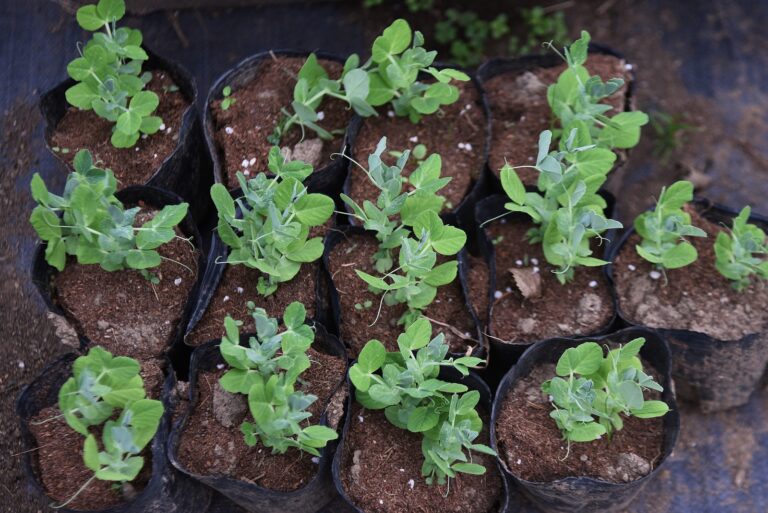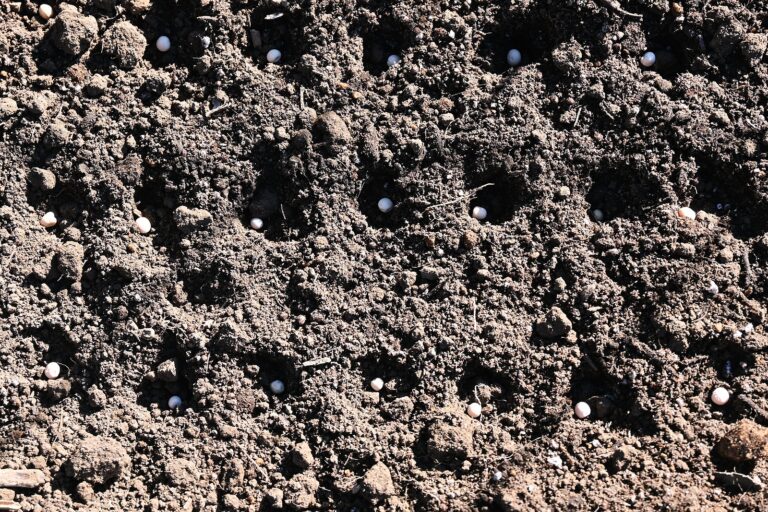Fava Bean Companion Planting Guide
Fava beans (broad beans) are one of the best crops for enriching your garden soil. As legumes, they fix nitrogen from the air and add it to the soil through their roots—benefiting nearby plants. Companion planting fava beans can improve soil fertility, reduce pests, and make the most of your growing space.
Over many seasons in my Sonoma Valley garden, I’ve learned that fava beans are generous companions. When paired with the right crops, they help build healthy soil and support a balanced garden ecosystem.
Why Companion Plant Fava Beans?
- Nitrogen Fixation: Fava beans enrich the soil for heavy feeders like corn, brassicas, and leafy greens.
- Pest Deterrence: Their strong scent and dense foliage can confuse or repel aphids and other pests.
- Pollinator Attraction: Fava flowers draw bees early in the season, helping pollinate nearby crops.
- Living Mulch and Shade: Tall fava plants provide light shade for tender greens in spring.
Best Companion Plants for Fava Beans
🌽 Corn
Fava beans fix nitrogen, which corn needs in large amounts. Plant favas beside or in front of corn to enrich the soil and support stronger stalks.
🥦 Brassicas (Broccoli, Cabbage, Kale, Cauliflower)
Brassicas thrive on the nitrogen favas leave in the soil. Plant them nearby or follow favas in rotation for vigorous growth.
🥬 Lettuce and Spinach
These greens benefit from the filtered shade of taller fava plants in spring. Sow greens between rows of favas for a productive mixed bed.
🧄 Onions, Garlic, and Leeks
These alliums help deter aphids and other pests that sometimes feed on fava plants. They make excellent border companions.
🌿 Herbs (Mint, Dill, Coriander)
Strong-scented herbs attract beneficial insects and discourage aphids. Plant herbs nearby but not so close that they compete for root space.
🌸 Flowers (Calendula, Nasturtium, Sweet Alyssum)
These flowers attract pollinators and beneficial insects that protect favas from pests. Nasturtium also works as a trap crop for aphids.
Poor Companions for Fava Beans
🌱 All Other Legumes (Peas, Beans, Lentils)
Avoid planting favas with other legumes. They compete for the same nutrients and can share diseases like root rot and mosaic virus.
🍅 Tomatoes, Peppers, and Eggplant
Favas prefer cool conditions and moist soil, while these warm-weather crops prefer dry heat. They don’t thrive side by side.
🧅 Fennel
Fennel inhibits the growth of many plants, including legumes. Keep it well away from fava beans.
Crop Rotation Tip
After harvesting fava beans, leave their roots in the soil to release nitrogen. Follow with leafy greens, brassicas, or fruiting crops that benefit from nutrient-rich soil. I often follow my spring fava crop with summer kale or late tomatoes—they grow vigorously in soil enriched by the fava roots.
My Experience
In my Zone 9B garden, I plant fava beans in wide beds with alternating rows of lettuce and onions. The favas fix nitrogen for the greens, and the onions help deter aphids. By late spring, I harvest crisp lettuce and young onions beneath tall, blooming fava plants—a productive, pest-balanced system that keeps the soil alive year-round.
Key Takeaway:
Fava beans are powerful soil builders and team players in the garden. Pair them with corn, brassicas, greens, and alliums—and avoid other legumes or heat-loving crops. Smart companion planting with favas leads to healthier soil, fewer pests, and better harvests.
🌿 Fava Bean Companion Planting Chart
| Category | Good Companions | Benefits |
|---|---|---|
| Leafy Greens | Lettuce, Spinach, Chard | Grow well in partial shade from favas; enjoy improved soil nitrogen. |
| Brassicas | Broccoli, Cabbage, Kale, Cauliflower, Brussels Sprouts | Thrive on nitrogen left by fava roots; strong growth and greener leaves. |
| Root Crops | Carrots, Beets, Radishes, Turnips | Benefit from loose, nitrogen-rich soil; roots develop evenly. |
| Alliums | Onions, Garlic, Leeks, Chives | Help repel aphids and other pests; natural pest protection. |
| Grains & Tall Crops | Corn, Wheat, Barley | Favas fix nitrogen for these heavy feeders; corn provides windbreak. |
| Herbs | Dill, Coriander, Mint (in containers), Parsley | Attract beneficial insects and pollinators; confuse pests. |
| Flowers | Calendula, Nasturtium, Sweet Alyssum, Marigold | Draw pollinators and predatory insects; add color and diversity. |
| Category | Poor Companions | Reasons to Avoid |
|---|---|---|
| Other Legumes | Peas, Beans, Lentils | Compete for nutrients; may share diseases and pests. |
| Warm-Season Crops | Tomatoes, Peppers, Eggplant, Cucumbers | Prefer different soil and temperature conditions; poor growth results. |
| Allelopathic Plants | Fennel | Releases chemicals that inhibit fava bean growth. |
| Heavy Feeders (same season) | Corn (when planted together in small spaces) | Can outcompete favas for nutrients unless soil is rich. |
🌱 Rotation Tip
After harvesting fava beans, leave the roots in the soil. The nodules will slowly release nitrogen, improving soil fertility for the next crop. Follow fava beans with leafy greens or brassicas for best results.
Fava Bean Learning Hub
Start here: The Ultimate Fava Bean Growing Guide: From Seed to Harvest
Planting & Growing Basics
- Fava Bean Planting Time by Region
- How Deep and How Far Apart to Plant Fava Beans
- Fava Companion Planting Guide
- Growing Fava Beans in Containers
Soil, Water, and Feeding
- Best Soil for Fava Beans and How to Prepare It
- How to Water Fava Beans for Best Growth
- Feeding Fava Beans Naturally: Compost and Nitrogen Fixing
Care & Maintenance
- How to Care for Fava Beans During the Season
- Managing Weeds Around Fava Beans
- Supporting Fava Beans: Do They Need Staking?
Pest & Disease Management
Harvest, Storage & Preservation
- How to Tell When Fava Beans Are Ready to Harvest
- How to Dry Fava Beans for Long-Term Storage
- How to Store and Preserve Fresh Fava Beans
Varieties & Seed Saving
Cooking & Using Fava Beans
Companion & Related Crops



